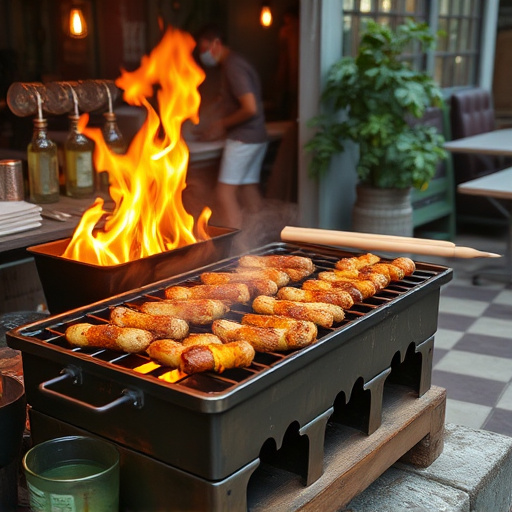Smoked BBQ ribs are a culinary delight, with unique flavors and textures from different cut types. Cooking methods, such as low-and-slow techniques, break down collagen for maximum tenderness. Dry brining enhances flavor and texture, while smoking adds traditional smoky notes. A key formula is 3 hours per pound at 225°F (107°C), resting ribs for 10-15 minutes before serving with classic sides like coleslaw or cornbread.
Unleash the secret to achieving perfectly tender smoked BBQ ribs—a culinary journey that starts with understanding the science behind low-temperature cooking. This comprehensive guide takes you through every step, from choosing the right cut to mastering the art of dry brining for enhanced flavor. Learn about various cooking methods, including slow cookers and ovens, and discover the magic of smoking for that authentic BBQ twist. With precise temperature settings and calculated cooking times, your ribs will melt in your mouth, making this smoked BBQ ribs recipe a true crowd-pleaser.
- Understanding Ribs: Cut Types and Their Impact on Tenderness
- The Science Behind Low-Temperature Cooking for Maximum Tenderness
- Pre-Preparing Your Ribs: Dry Brining for Enhanced Flavor
- Choosing the Right Cooking Method: Slow Cooker vs. Oven
- Smoking for ExtraFlavor: Techniques and Tips for Perfect Smoked BBQ Ribs
- Setting the Ideal Temperature: A Comprehensive Guide
- Cooking Time Calculations: How Long to Cook for Fall-Off-the-Bone Ribs
- Resting and Serving: Ensuring Your Ribs Are at Their Best
Understanding Ribs: Cut Types and Their Impact on Tenderness
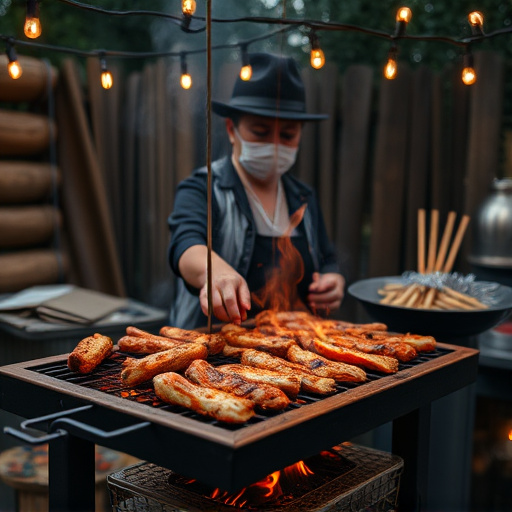
Ribs, whether from a smoked BBQ ribs recipe or otherwise, are a beloved treat known for their tender meat and flavorful taste. Understanding different cut types is key to achieving maximum tenderness. The two primary cuts are baby back ribs and spare ribs. Baby back ribs, with their smaller bone structure and less connective tissue, tend to be more tender when cooked low and slow. This style of cooking allows the meat to literally melt off the bone. In contrast, spare ribs, with their larger bones and extensive connective tissue, benefit from a longer cooking time at lower temperatures. This method breaks down the tough collagen into gelatin, resulting in incredibly tender, juicy ribs.
Choosing the right cut for your smoked BBQ ribs recipe is half the battle won. While both types have their merits, understanding how different cuts react to low-temperature cooking will ensure you achieve that coveted level of tenderness. Proper preparation and a patient approach to cooking will transform even the toughest ribs into a delectable feast.
The Science Behind Low-Temperature Cooking for Maximum Tenderness
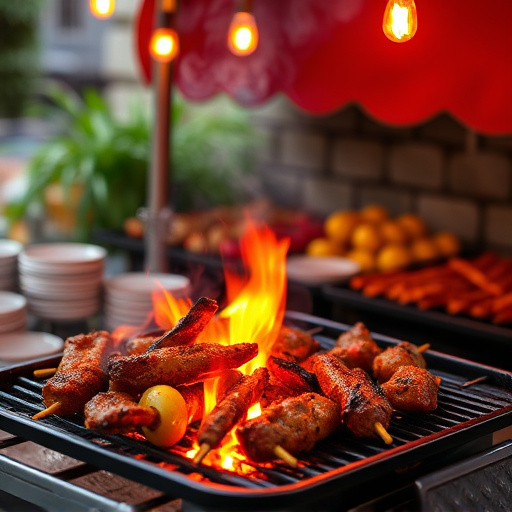
Cooking ribs at low temperatures is a science-backed method that ensures maximum tenderness and flavor. The process, often associated with smoking BBQ ribs recipes, involves slow cooking the meat over indirect heat for an extended period. This gentle approach allows collagen in the meat to break down into gelatin, resulting in tender, succulent ribs. The low-temperature cooking also helps to preserve the ribs’ natural juices, preventing them from drying out and ensuring a moist, delicious final product.
The exact science behind this method includes complex chemical reactions that occur within the muscle fibers of the ribs. Slow cooking at lower temperatures promotes these reactions, enhancing the overall taste and texture of the meat. This is particularly important for smoked BBQ ribs recipes, where the low-temperature cooking not only ensures the ribs are tender but also allows for the deep, rich flavors to develop, creating a true culinary experience.
Pre-Preparing Your Ribs: Dry Brining for Enhanced Flavor
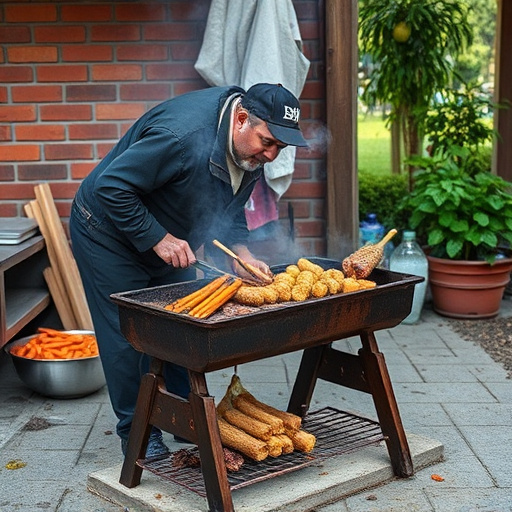
Before cooking your ribs low and slow for maximum tenderness, a crucial step is pre-preparing them properly. One effective method is dry brining, which involves massaging a mixture of salt and spices into the meat. This technique enhances flavor by drawing out some moisture from the ribs, allowing them to absorb more seasoning during the long cooking process.
Dry brining for 24–48 hours ensures that your smoked BBQ ribs recipe starts with optimal taste. Use a generous amount of coarse salt mixed with herbs and spices like paprika, garlic powder, black pepper, and brown sugar. Rub this mixture all over the ribs, patting it gently to ensure even coverage. This simple step will transform your ribs into a delicious, tender treat that’s sure to impress.
Choosing the Right Cooking Method: Slow Cooker vs. Oven
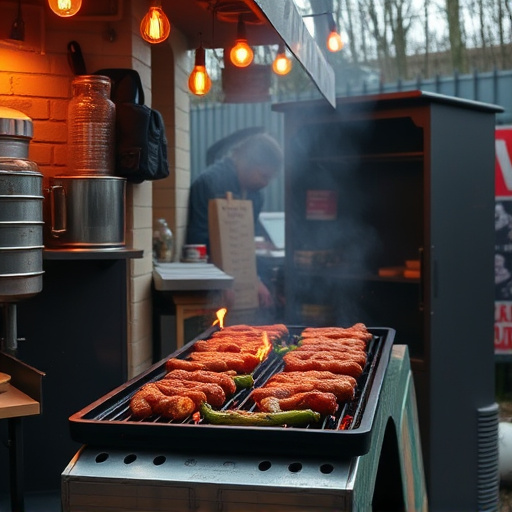
When it comes to achieving maximum tenderness in your smoked BBQ ribs recipe, choosing the right cooking method is key. Both slow cookers and ovens have their advantages, but for truly melt-in-your-mouth ribs, a slow cooker often delivers superior results. The gentle, low-temperature cooking process allows collagen in the meat to slowly break down, ensuring a tender final product.
In contrast, using an oven can lead to drier ribs due to its higher temperatures and faster cooking time. While it may seem counterintuitive for tenderness, some cooks prefer oven-roasted ribs for their rich flavor and crackly exterior. Ultimately, the choice depends on your personal preference and the equipment you have available, but for those seeking the ultimate in tender, juicy smoked BBQ ribs, a slow cooker is often the better bet.
Smoking for ExtraFlavor: Techniques and Tips for Perfect Smoked BBQ Ribs
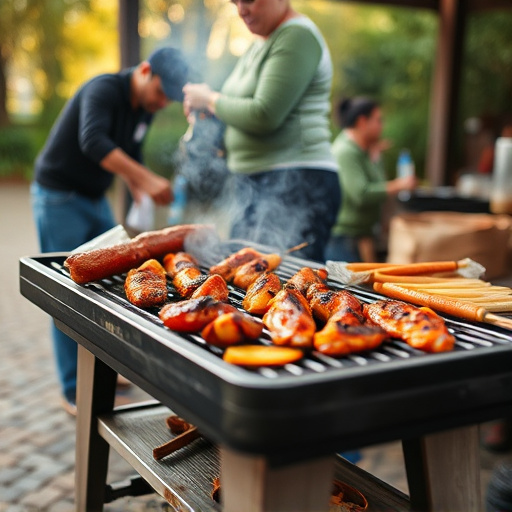
Smoking is a time-honored technique that enhances the flavor of ribs, creating those coveted smoky, savory notes that elevate BBQ ribs from good to great. While cooking ribs low and slow for maximum tenderness is essential, adding smoke infuses the meat with a depth of flavor that’s hard to beat.
To achieve perfectly smoked BBQ ribs, start by selecting a quality wood chip or chunk—hickory, oak, mesquite, or applewood are popular choices—and using a smoker designed for low-and-slow cooking. Maintain a consistent temperature between 225°F and 250°F (107°C to 121°C), allowing the smoke to gently envelop the ribs. Experiment with different smoking techniques, like cold smoking or hot smoking at lower temperatures, for unique flavor profiles. Remember, patience is key; smoking times can vary, so monitor your ribs closely and adjust as needed based on their tenderness.
Setting the Ideal Temperature: A Comprehensive Guide
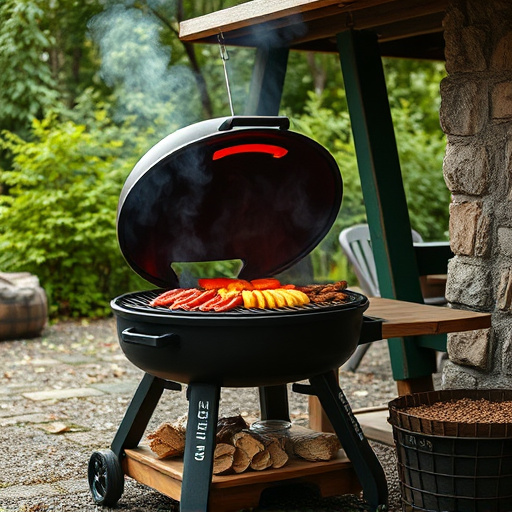
When it comes to cooking smoked BBQ ribs, temperature is key. For maximum tenderness, low and slow is the way to go. Ideally, you want to cook your ribs at around 225°F (107°C) for a prolonged period of time. This gradual process allows the collagen in the meat to break down, resulting in those lip-smacking, fall-off-the-bone ribs everyone loves.
A good rule of thumb is to cook your ribs for approximately 3 hours per pound at this low temperature. So, if you have a 3-pound (1.4 kg) rack of ribs, plan on a 9-hour cooking time. This might seem like a long time, but it ensures that the meat becomes incredibly tender and flavorful. Plus, using a smoker or slow cooker at a consistent low temp makes achieving this level of tenderness much easier than trying to rush the process with higher temperatures.
Cooking Time Calculations: How Long to Cook for Fall-Off-the-Bone Ribs
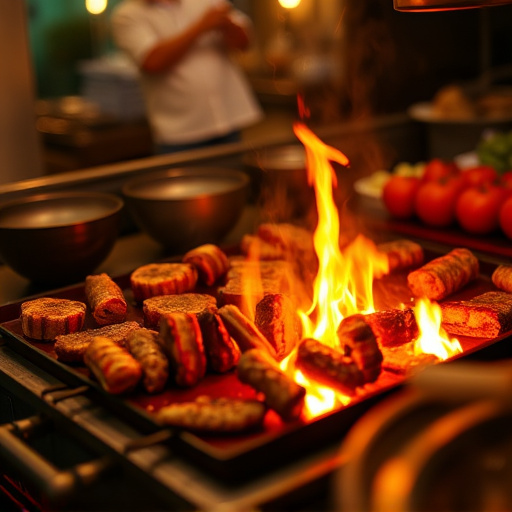
Cooking time for smoked BBQ ribs recipes varies based on several factors, most importantly the starting temperature and the desired tenderness. Generally, cooking low and slow is key to achieving fall-off-the-bone ribs. For a standard 3-4 pound rack of pork ribs at a smoke temperature of 225°F (107°C), plan for approximately 3 hours. However, larger or smaller cuts may require adjustments, as will desired doneness—if you prefer your ribs slightly less tender, allow for a bit more cooking time. It’s crucial to monitor the internal temperature using a meat thermometer; ribs are ready when they reach 203°F (95°C) for maximum tenderness and ease in removing from the bone.
Resting and Serving: Ensuring Your Ribs Are at Their Best
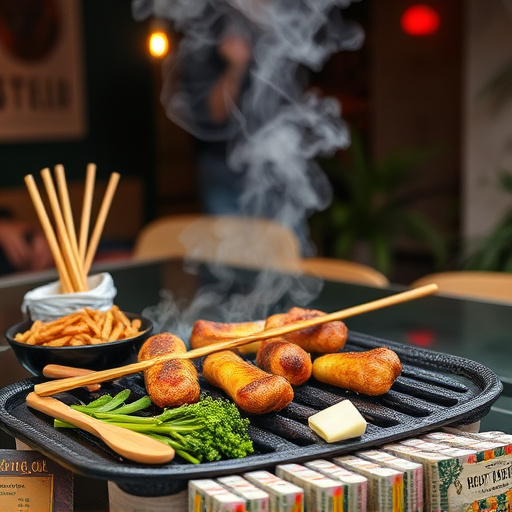
After slowly cooking your smoked BBQ ribs recipe to perfection, it’s crucial to allow them to rest for 10-15 minutes before slicing. This resting period is essential as it allows the juices to redistribute throughout the meat, ensuring maximum tenderness and flavor. During this time, the internal temperature of the ribs will continue to rise slightly, securing a juicy and mouthwatering result.
When serving your delicious smoked BBQ ribs, consider pairing them with classic side dishes like coleslaw, baked beans, or cornbread. This combination not only enhances the overall dining experience but also complements the rich, smoky flavors of the ribs. Remember, resting and proper serving techniques are key to presenting your culinary masterpiece at its best.
